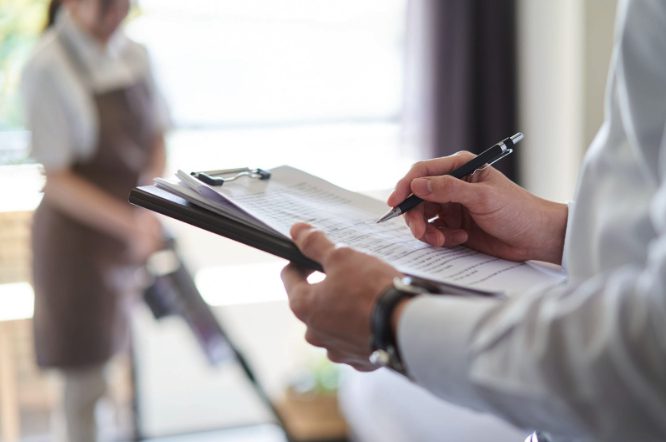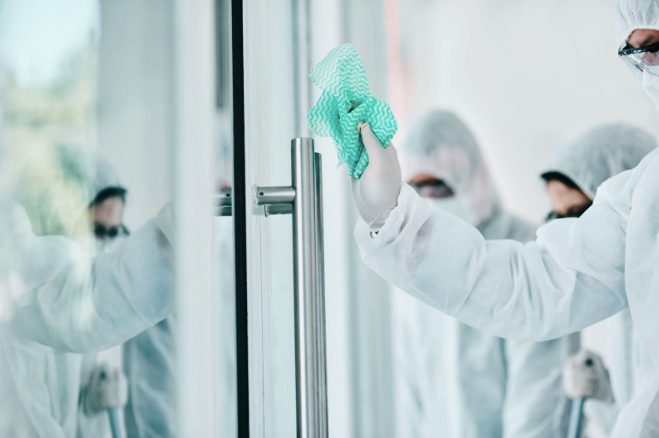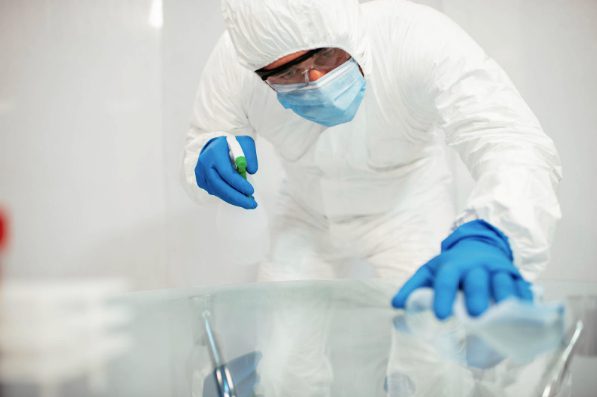The Ultimate Guide to Cleaning Validation

Cleanliness & hygiene are critical considerations in any environment, whether commercial or residential. Germs, bacteria & dirt all negatively impact a building’s appearance & safety. In some industries, however, the value of cleanliness goes beyond simply protecting well-being. This is when a cleaning validation protocol is necessary.
In the pharmaceutical, healthcare & food production sectors, companies must adhere to strict guidelines. This method protects the integrity of products, defend against cross-contamination & minimize risks.
Cleaning validation is a component of a comprehensive quality control strategy. This method ensures companies implement the most effective procedure for their environment. It guarantees adherence to regulatory industry requirements.
In this guide, we will discuss the importance of a cleaning process validation. Additionally, we will explore how organizations can craft & implement the ideal cleaning validation protocol. This helps businesses & companies protect their reputation, staff & consumers from unnecessary risks.
What is Cleaning Validation? An Introduction
A systematic process, cleaning validation is seal of authentication for a cleaning procedure's effectiveness. It involves the removal of dirt, germs, bacteria & microbes from surfaces & environments. This quality assurance method is common in pharmaceutical, medical & manufacturing centers, in addition to the food & beverages industry.
Cleaning validation helps to ensure companies can consistently produce & maintain a safe environment for the manufacturing of various products. Notably, however, it is not exactly the same as cleaning verification. This protocol requires a thorough & planned set of activities. It establishes evidence that each cleaning procedure used in an organization is consistently effective. It involves the use of dedicated equipment for rigorous testing & documentation.
Cleaning verification, on the other hand, is a more routine process in quality control. It confirms a cleaning procedure has been effective in a specific instance. At Pritchard Industries, we offer cleaning & disinfecting services along with the option to perform a verification process. After each cleaning event, the validation ensures equipment meets the correct standards before reuse.
Why is There a Need for Cleaning Validation?
As mentioned above, cleanliness is crucial in all environments. It is particularly essential within facilities that manufacture products for human consumption. A cleaning validation protocol ensures the safety & quality of products in industries where hygiene is paramount. The method follows various regulatory guidelines, including Good Manufacturing Practice (GMP). Companies & cleaning service providers use cleaning validation techniques to ensure they meet regulatory guidelines for hygiene & safety.
Without cleaning validation services, businesses are at greater risk of various problems. Proper cleaning practices can eliminate the risk of contamination (the presence of unwanted substances in products) & cross-contamination in professional settings.
This protocol helps prevent dangerous residue & substances from transferring to products consumed by the public. Additionally, it reduces the risk of product quality issues & regulatory violations. Failure to follow an effective cleaning validation protocol can lead to product recalls, legal penalties & loss of customer trust.

When to Perform Cleaning Validation?
Cleaning validation protocols form an integral part of the process used to maintain product quality & safety across various industries. Here are some circumstances when a cleaning validation process would be helpful:
- A new manufacturing process: Cleaning validation should take place at the start of a new manufacturing processes. This ensures the environment is safe & hygienic for production process.
- Changing cleaning procedures: Any changes in cleaning procedures, the cleaning agent used & other strategies require cleaning validation. Modifications to the cleaning process, such as the decision to use green cleaning products, can alter its efficacy. Therefore, it is essential to reevaluate procedures.
- Updating equipment: A new medical device or piece of equipment in a professional environment can present new cleaning challenges. Cleaning validation at this stage helps companies determine the right cleaning processes to maintain high levels of hygiene & safety.
All businesses & industries require different frequencies for cleaning validation. Production equipment complexity & the type of product manufactured influence frequency.
FDA Guidelines for Cleaning Validation
Regulatory bodies like the US Food & Drug Administration (FDA) publish guidelines designed to assist organizations with the implementation of cleaning validation & analytical methods. Guidelines like CFR Title 21 set forth the requirements for the manufacturing, processing, packaging & storage of pharmaceutical products to ensure they meet safety & quality standards.
They also highlight the importance of using effective cleaning & disinfection methods & validating cleaning procedures to prevent contamination & cross-contamination.
Appropriate cleaning methods & analytical processes verify the efficacy of cleaning strategies, such as establishing sampling locations & swab sampling techniques to search for evidence of residue before a manufacturing process begins. They can also identify when automated & manual cleaning methods are appropriate & when expertise may be necessary.
Documentation & accurate record-keeping also play a pivotal role in the FDA’s cleaning validation guidelines. Companies must maintain cleaning record, along with process updates.
Organizations should maintain records that share the results of validation efforts & standard operating procedures. Records must be readily accessible for FDA inspection.
The Steps of the Cleaning Validation Process
The precise steps involved in your cleaning validation process will vary depending on your industry, the regulatory guidelines you need to follow & your location. Typically, however, the core stages of an effective approach will include:
- Planning: Companies must identify the scope & objective of the cleaning validation process. A business must ensure all its essential equipment & areas are properly validated. The planning process can include selecting products & residues to target, based on the risk they may pose to product quality & safety.
- Protocol development: Next, businesses need to develop a validation protocol that outlines the cleaning & disinfection strategies to be used. The protocol should include criteria for acceptable cleanliness levels, methods of analysis to be used (such as swab analysis), & documentation requirements.
- Execution: The next stage is implementing the cleaning procedures & validation strategies as outlined in the validation protocol. This step involves applying the chosen cleaning method, using specific cleaning agents & validating the cleanliness of equipment or surfaces according to preset guidelines.
- Reporting & documentation: At this stage, companies record the results of their cleaning validation process in a comprehensive report. This report outlines the effectiveness of the process, confirms compliance with the accepted criteria & highlights any deviations or corrective actions that may have been taken.

Specialized Cleaning Agents
To adhere to regulatory guidelines for health & safety, companies need to ensure they’re selecting the right cleaning agents based on the risks in their environment. Each commercial space has its own requirements to consider when it comes to cleaning. For instance, in some environments where leftover cleaning product residue could lead to issues with product quality or contamination, companies may adopt ultrasonic cleaning methods.
Some of the most common cleaning agents used in various industries include:
- Detergents: Used in general cleaning practices to remove organic 7 inorganic residue.
- Solvents: Used to dissolve specific types of residues, which cannot be removed with detergent & water.
- Disinfectants: Products used to minimize microbial contamination on surfaces.
An effective cleaning service provider should be able to help you identify the right cleaning agents & solutions for your equipment, based on a comprehensive risk assessment.
Specialized Cleaning Methods
Alongside selecting the right cleaning agents, organizations must adhere to the correct cleaning processes based on the equipment they use & the substances that surfaces & environments are exposed to. Common strategies include:
- Clean-in-place: CIP cleaning methods involve cleaning the equipment surface without dismantling or moving anything. This strategy is commonly used for equipment that’s difficult to dismantle.
- Clean-out-of-place: With COP strategies, equipment & components are dismantled & cleaned in a dedicated area, away from the primary workspace.
- Immersion cleaning: This strategy involves immersing components of a piece of equipment into a cleaning solution, tailored to the potential residues that need to be removed.
- Ultrasonic washing: With ultrasonic washing, companies use ultrasound & cleaning solutions to clean intricate parts & components.
- High-pressure spraying: Commonly used in external settings, high-pressure spraying removes residue with high-pressure water or cleaning solutions.
- Manual cleaning: Manual cleaning involves cleaning equipment & surfaces by & with cloths, brushes & carefully chosen cleaning agents.
Organizations are required to use a variety of different cleaning methods dependent on the types of surface & equipment in their facility.
The Importance of Sampling in Cleaning Validation
Sampling is one of the most important elements of the cleaning validation process. It allows companies & cleaning professionals to guarantee that a surface or piece of equipment adheres to cleanliness & hygiene standards.
Companies can explore various sampling methods, such as direct surface sampling, which involves using swabs or contact plates to collect & examine residues from equipment surfaces. Companies can also use rinse sample methods to rinse a surface with a solvent & then analyze the rinse solution for residue.
Effective sampling helps ensure that companies can validate their equipment cleaning process or the cleaning strategies used by their commercial cleaning team. It also provides organizations with the data & details they need for thorough documentation.
The Importance of Thorough Cleaning Validation
Cleaning validation is a crucial part of the quality management process for countless companies manufacturing products for human consumption. The right cleaning validation procedure ensures you can guarantee the safety and quality of your products, and adhere to regulatory guidelines.
As experts in delivering tailor-made cleaning services, antimicrobial coating solutions, & disinfection services, Pritchard Industries understands the value of effective cleaning validation strategies. We follow stringent cleaning validation processes when delivering our services to ensure companies can adhere to the latest industry regulations.
Contact Pritchard Industries today to learn how we can help you optimize & enhance your cleaning processes & preserve quality & safety standards.
Contact Pritchard Industries here.
FAQ
What is the FDA validation of the cleaning process?
The FDA’s guidelines for cleaning validation require companies to effectively demonstrate that a cleaning process can consistently clean equipment to a predetermined standard. Sampling & analytical test methods need to be scientifically sound & must provide insights to support the validation, available via documentation.
What is the lifecycle of cleaning validation?
The cleaning validation lifecycle starts with assessment or planning, followed by the development of validating & cleaning operation procedures. Next, companies must implement their cleaning strategies & validation methods & document the results.
Is cleaning validation required for dedicated equipment?
Yes, cleaning validation isn’t just intended to reduce the risk of cross-contamination. It’s a comprehensive strategic process designed to ensure that all cleaning methods used in a facility are consistently effective. You’ll still need to validate your cleaning methods when using dedicated equipment for specific processes.
What is the maximum safe surface residue?
The Maximum Safe Surface Residue, or MSSR, refers to the maximum amount of residue that can remain on equipment surfaces without posing a risk to consumers or patients. To calculate this number, divide the maximum safe carryover area by the total area of shared contact.
What ISO doe cleaning validation use?
ISO 19227 outlines the objectives & requirements of an effective cleaning validation process for medical offices, pharmaceutical companies & other businesses. It provides a framework for verifying the effectiveness of cleaning processes & their impact on consumer & employee safety in a range of sectors.
